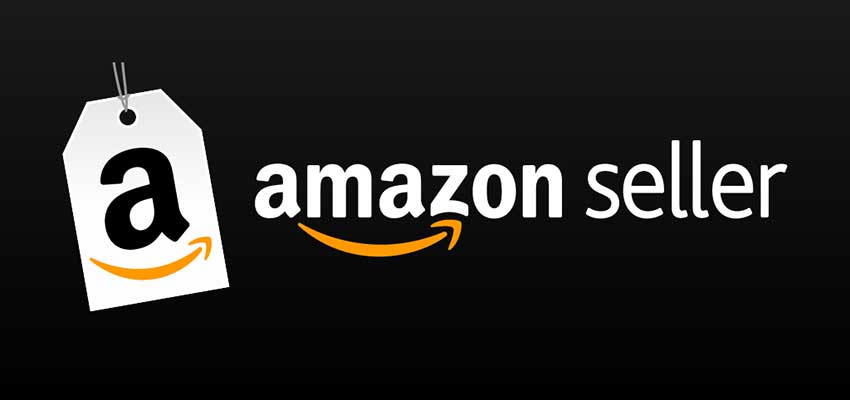Show:
5 Beginner-Friendly Steps to Start an Amazon Business
With a vast audience flocking to Amazon daily, it’s a prime platform for budding eCommerce entrepreneurs. But standing out among countless sellers requires more than just listing products. This guide will take you through the overview of the steps, from product research to effective inventory management, ensuring you have a solid foundation for your Amazon business.

Step 1. Research and Product Selection
Launching an eCommerce venture on Amazon demands a deep grasp of the market, coupled with strict adherence to Amazon’s product policies. This involves identifying what products are in demand, finding niches with less competition, and ensuring that the chosen products are profitable. Here’s a breakdown:
Understanding Market Demand
Employ specialized tools to delve into sales data, helping you identify popular products.
- Tools for Insight: SmartScout, Jungle Scout, and Helium 10 are invaluable for gaining insights into product demand. These tools analyze sales data and trends to provide a clear picture of what’s selling.
- Best-Seller Rankings: By studying Amazon’s best-seller rankings, you can gauge the popularity of products in specific categories, giving you a hint on what might be a good product to sell.
Identifying Low Competition Niches
Differentiation is key. It’s not just about finding a product; it’s about making it stand out. This can be achieved through superior quality, unique packaging, or added features that competitors don’t offer.
Evaluating Profit Margins
Ensure your chosen product is profitable after all expenses.
- Factor in all costs: Before deciding on a product, consider all associated costs. This includes Amazon’s fees, shipping charges, manufacturing costs, and any other expenses that might arise.
- Pricing strategy: Using the data on costs, set a price for your product. The goal is to ensure profitability while remaining competitive in the market.
Step 2. Setting Up Your Amazon Seller Account
Starting your ecommerce journey on Amazon starts with selecting the appropriate seller account. This process, while straightforward, requires careful consideration of the type of account and understanding the associated costs.
Choosing the Right Account Type
When signing up for an Amazon Seller account, you’ll primarily choose between Individual and Professional options.
- Individual accounts: These are free and cater to sellers who have a smaller inventory or are just starting out. However, for every item sold, Amazon charges a fee.
- Professional accounts: For a monthly fee, this account type offers a suite of advanced selling tools. It’s designed for those planning to sell more than 40 items monthly. The upfront cost is offset by the absence of per-item fees, making it cost-effective for higher-volume sellers.
Understanding Amazon’s Fee Structure
Amazon’s fee structure can be intricate, with charges varying based on the product category and selling price. It’s essential to:
- Dive deep into the fee breakdown for your specific product category.
- Factor in referral fees, which are a percentage of the sale price.
- Consider additional fees, like fulfillment or storage fees, if you opt for Amazon’s FBA (Fulfillment by Amazon) service.

Ensuring Accurate Business Details
Your credibility as a seller is paramount. To foster trust and ensure smooth transactions:
- Provide accurate business information, including your legal business name, address, and contact details.
- Ensure your bank account details are correct for seamless transaction processing.
- Regularly update any changes to maintain transparency and trust with Amazon and your customers.
Step 3. Product Sourcing and Supplier Relations
A cornerstone of Amazon ecommerce success is procuring top-notch products at favorable prices. This process involves not only identifying the right suppliers but also establishing strong, mutually beneficial relationships with them.
Finding Reliable Suppliers
In the expansive realm of global manufacturing, identifying trustworthy suppliers can be challenging.
Leveraging Online Platforms: Websites like Alibaba have revolutionized how businesses source products. They offer a plethora of manufacturers, complete with ratings, reviews, and product catalogs. When navigating these platforms, consider:
- Checking supplier ratings and reading reviews from other businesses.
- Verifying certifications or awards that vouch for the supplier’s credibility.
The Importance of Samples: Always request samples before committing to a large order. This allows you to:
- Assess the quality of the product firsthand.
- Check for consistency across multiple samples.
- Determine if the product aligns with your brand and quality standards.
Negotiating Terms
After pinpointing potential suppliers, your next move is to hash out mutually beneficial terms.
Pricing: This is often the first point of negotiation. Understand the cost breakdown, and don’t be afraid to ask for discounts, especially if you’re placing large orders.
MOQ (Minimum Order Quantity): Suppliers often have a set MOQ. If it’s too high, discuss the possibility of reducing it, especially for your initial orders.
Lead Times: Understand how long it will take for the supplier to produce and ship your order. This is crucial for inventory planning.
Building Relationships: Beyond the numbers, fostering a good relationship with your suppliers is invaluable. Regular communication, understanding their challenges, and timely payments can lead to:
- Better negotiation terms in the future.
- Priority treatment during busy seasons or when supply is limited.
- Insights into new products or industry trends.
By meticulously handling product sourcing and nurturing supplier relations, you ensure a steady supply of quality products, setting the stage for sustained success on Amazon.
Step 4. Creating an Optimized Product Listing
Your product listing on Amazon serves as your virtual storefront. It’s the first impression customers get of your product, which plays a pivotal role in their purchase decision. Crafting a compelling listing involves a blend of aesthetics, clear communication, and leveraging Amazon’s tools.
High-Quality Product Images
In ecommerce, the adage “A picture is worth a thousand words” rings particularly true. Your product images are the closest customer interaction with your product before purchasing.
Professional Photography: While it might be tempting to take pictures yourself, investing in professional photography ensures:
- Clear, high-resolution images that highlight product details.
- Consistent lighting and background, which enhance the overall presentation.
Multiple Angles: Showcase your product from various angles to give customers a comprehensive view. This reduces uncertainty and can answer questions they might have about the product’s design or functionality.
Infographics: These are a blend of images and text. Infographics can:
- Break down complex features into easy-to-understand visuals.
- Highlight unique selling points that set your product apart.

Compelling Product Descriptions
Your product description is where you communicate the value and functionality of your product.
Benefits Over Features: While features are important, translating them into tangible benefits for the customer can be more persuasive. For instance, instead of just stating “waterproof,” explain how it ensures the product can be used in all weather conditions.
Keyword Optimization: Use tools like Amazon’s Keyword Planner or SmartScout’s AI Listing Architect to identify relevant keywords. Incorporate these naturally into your description to improve search visibility. Remember, keyword stuffing can deter readers and potentially violate Amazon’s guidelines.
Gathering Initial Reviews
Reviews act as social proof and can significantly influence purchase decisions.
Amazon’s Early Reviewer Program: This program encourages customers to leave reviews by offering them a small reward. It’s a legitimate way to gather initial feedback for new products.
Value of Honest Feedback: While positive reviews are great, even constructive criticism can be beneficial. It provides insights into potential improvements and shows customers that the feedback is genuine.
By meticulously crafting your product listing, you attract potential customers and provide them with all the information they need to make an informed purchase, enhancing their overall shopping experience on Amazon.
Step 5. Managing Inventory and Fulfillment
Amazon offers two primary fulfillment methods, each with its own set of advantages and challenges:
Fulfillment Options
FBA allows Amazon to handle storage and shipping, while FBM gives you more control but requires manual management.
Further reading: FBA Doesn’t Always Beat FBM: When to Pick One for New Sellers
Proactive Inventory Management
Maintaining the right inventory levels is a balancing act. Too much stock ties up capital, while too little can lead to missed sales opportunities.
Inventory Forecasting Tools: Platforms like RestockPro offer predictive analytics based on sales trends, seasonality, and lead times. This helps you:
- Anticipate demand and adjust orders accordingly.
- Avoid stockouts, which can harm your seller rating and sales.
- Prevent overstocking, which can lead to increased storage fees or wasted products.
Regular Audits: Periodically review your inventory levels, sales velocity, and any external factors (like upcoming holidays or events) that might affect demand.
By strategically managing inventory and choosing the right fulfillment method, you can optimize costs, improve customer satisfaction, and enhance your overall performance on Amazon.
Making Your Mark on Amazon
Starting a business on Amazon is more than just selling products. It’s about standing out in a crowded market. So, how do you make sure people notice and remember your brand?
- Be Real: Talk to your customers. Understand what they want and respond honestly.
- Learn and Adapt: Things change fast online. Stay updated and be ready to adjust your approach. As you grow and evolve, consider implementing essential techniques to scale your business growth to maintain momentum.
- Celebrate Every Success: Every sale and positive feedback is a sign you’re on the right track.
Think about this: What do you want people to say about your brand? And how will you make that happen on Amazon?

 Return to Previous Page
Return to Previous Page








